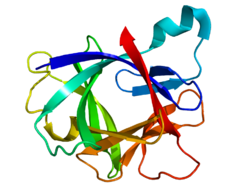The following is from a research article published August 4, 2023.
Abstract
Macrophage activation syndrome (MAS) is a type of hemophagocytic lymphohistiocytosis (HLH), which occurs due to excessive stimulation of the immune system. Common precipitants of MAS include disseminated infection or underlying rheumatologic disorders such as adult-onset Still’s disease which is characterized as an inflammatory arthritis with daily fevers and a salmon-colored rash. We present a case of a patient with probable adult-onset Still’s disease and subsequent disseminated cytomegalovirus (CMV) infection, who met the criteria for MAS based on the presence of a fever, cytopenia in multiple cell lines, elevated ferritin, presence of hemophagocytosis on bone marrow, low fibrinogen, and mild splenomegaly on physical exam. The patient responded to treatment with continuous anakinra infusion and ganciclovir for treatment of CMV. Though cytotoxic medications such as etoposide have traditionally been considered first-line treatment for HLH/MAS, interleukin-1 inhibitors such as anakinra are emerging as a less cytotoxic alternative.
Key Quotes
MAS is often considered the most feared consequence of patients with AOSD and has been reported to occur in close to 15% of these patients. Treatment options for MAS currently include IV Igs, corticosteroids, etoposide, cyclosporine, tocilizumab, and anakinra. Though anakinra is generally administered via the subcutaneous route, the IV route may be preferred in critically ill patients due to increased absorption and a decreased risk of bleeding if an underlying coagulopathy is present.
Recent case series and reports have highlighted the role of IV anakinra infusion at doses of 1-2 mg/kg in the treatment of patients with macrophage activation syndrome.
What does this mean?
We have some new-ish options for treating MAS! Now, that isn’t new as in a new drug, but it is a new delivery method for Anakinra (Kineret) specifically.
This is important for a range of reasons, but especially considering that MAS — “the most severe form of cytokine storm” — has occurred in COVID-19 patients. Between happening during infection, we also know that COVID-19 causes major upset to the body’s systems, leading to the development of a host of conditions that may themselves cause MAS. And, in children, MIS-C may often appear — a condition somewhere between MAS and Kawasaki Syndrome.
In the rheumatology world, MAS is most common in AOSD and SJIA, happening in 10-15% and roughly 10% of patients respectively. It can occur in patients with other autoimmune and autoinflammatory arthritis types, most often Systemic Lupus Erythematosus (SLE). According to research, mortality in MAS cases is between 20-53%. It’s hard to know exact numbers when MAS may not be caught before a patient dies — if they even can access healthcare and try to do so.
This is also part of why it is imperative for AOSD, SJIA, and SLE patients to all know the early signs and symptoms of MAS — and to trust your gut if you feel something is really wrong.
Citation
Gullickson M, Nichols L, Scheibe M (August 04, 2023) A Novel Therapy for a Rare Condition: Continuous Anakinra Infusion for a Patient With Macrophage Activation Syndrome. Cureus 15(8): e42968. doi:10.7759/cureus.42968










